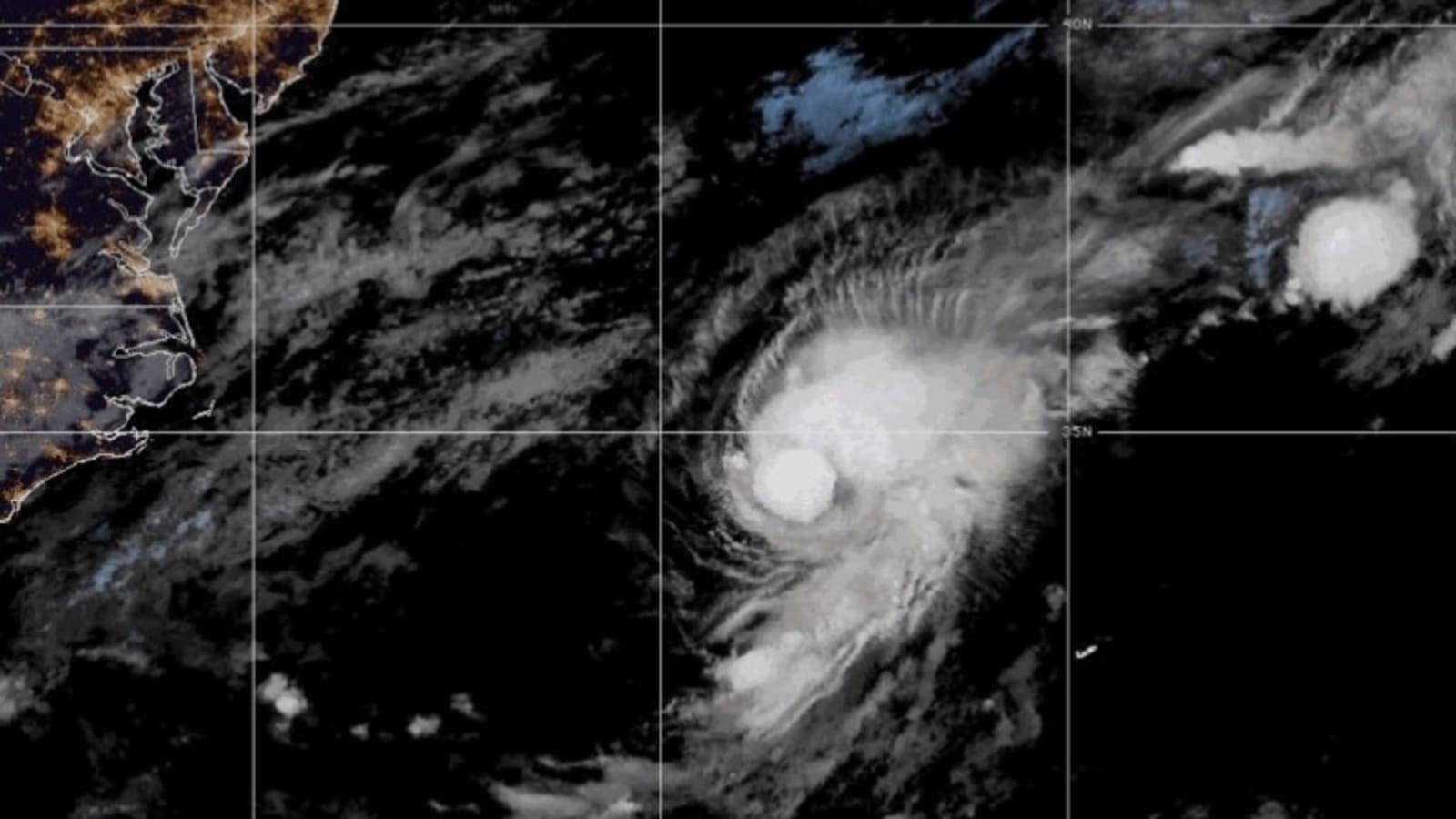World
Tropical Storm Dexter Moves Northeast, Flash Flood Risks Remain

Tropical Storm Dexter is currently advancing northeast in the Atlantic Ocean, moving away from the United States. As of now, there are no active coastal watches or warnings, and no immediate land risks have been identified, according to USA Today. The storm originated from a low-pressure area near a stalled front off the southern Atlantic coast and has already caused flash flooding in parts of the mid-Atlantic and Southeast regions over the past weekend.
Storm Development and Current Status
Dexter developed into a tropical storm on the evening of August 3, 2025, following a disturbance along a frontal boundary near the North Carolina coast. By the morning of August 4, the storm was situated approximately 250 miles northwest of Bermuda. Forecasts predict that Dexter will maintain its position north of Bermuda while facing increasingly challenging conditions over the Atlantic by August 5.
Hurricane expert Philippe Papin from the National Hurricane Center indicated that Dexter is expected to reach a maximum sustained wind speed of 45 mph at 11:00 a.m. on August 4. The storm is projected to move northeast at around 14 mph, with wind speeds likely to increase only slightly, by about 5 mph, due to adverse wind conditions and dry air.
Potential Risks and Future Developments
As Dexter continues its path, the National Weather Service (NWS) is actively monitoring the situation. Offices in Charleston, South Carolina, and Jacksonville, Florida, are tracking forecasts that could impact outdoor activities and travel plans in the region. While no immediate dangers are present, there remains a possibility of flash flooding if Dexter or any new tropical storms move inland, potentially affecting the Carolinas, Georgia, and Virginia.
In addition to Dexter, forecasters are keeping an eye on two other systems in the Atlantic. A large area of unsettled weather is located a few hundred miles off the southeast coast of the United States, while a tropical wave is moving off the west coast of Africa. The system near the Southeast has a 30% chance of developing into a tropical storm later this week.
As the 2025 hurricane season progresses, Dexter marks the fourth named storm, which typically appears around August 3, according to Philip Klotzbach, a senior research scientist at Colorado State University. The first hurricane of the season usually occurs by August 15.
With conditions in the Atlantic expected to evolve, residents in vulnerable regions are advised to remain vigilant, especially as the storm systems develop further.
-

 World5 months ago
World5 months agoSBI Announces QIP Floor Price at ₹811.05 Per Share
-

 Lifestyle5 months ago
Lifestyle5 months agoCept Unveils ₹3.1 Crore Urban Mobility Plan for Sustainable Growth
-

 Science4 months ago
Science4 months agoNew Blood Group Discovered in South Indian Woman at Rotary Centre
-

 World5 months ago
World5 months agoTorrential Rains Cause Flash Flooding in New York and New Jersey
-

 Top Stories5 months ago
Top Stories5 months agoKonkani Cultural Organisation to Host Pearl Jubilee in Abu Dhabi
-

 Sports4 months ago
Sports4 months agoBroad Advocates for Bowling Change Ahead of Final Test Against India
-

 Science5 months ago
Science5 months agoNothing Headphone 1 Review: A Bold Contender in Audio Design
-

 Top Stories5 months ago
Top Stories5 months agoAir India Crash Investigation Highlights Boeing Fuel Switch Concerns
-

 Business5 months ago
Business5 months agoIndian Stock Market Rebounds: Sensex and Nifty Rise After Four-Day Decline
-

 Sports4 months ago
Sports4 months agoCristian Totti Retires at 19: Pressure of Fame Takes Toll
-

 Politics5 months ago
Politics5 months agoAbandoned Doberman Finds New Home After Journey to Prague
-

 Top Stories5 months ago
Top Stories5 months agoPatna Bank Manager Abhishek Varun Found Dead in Well









